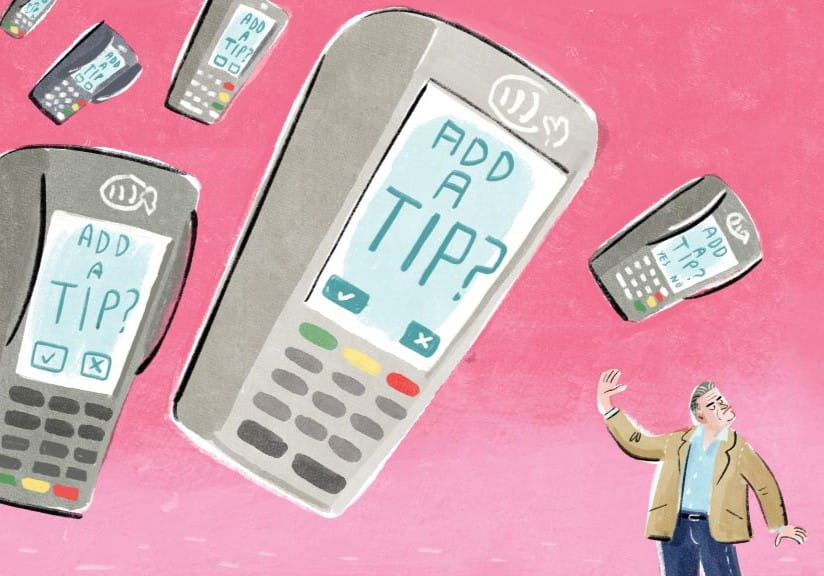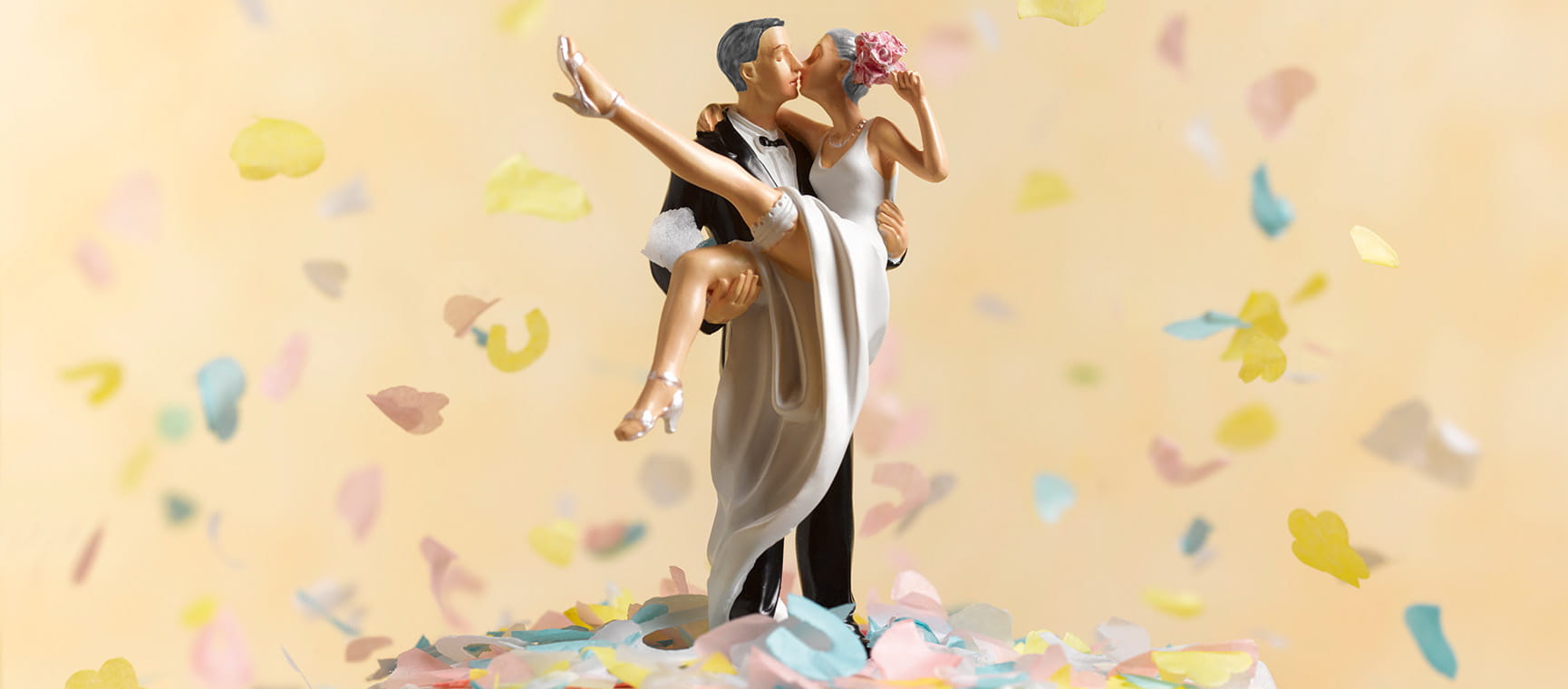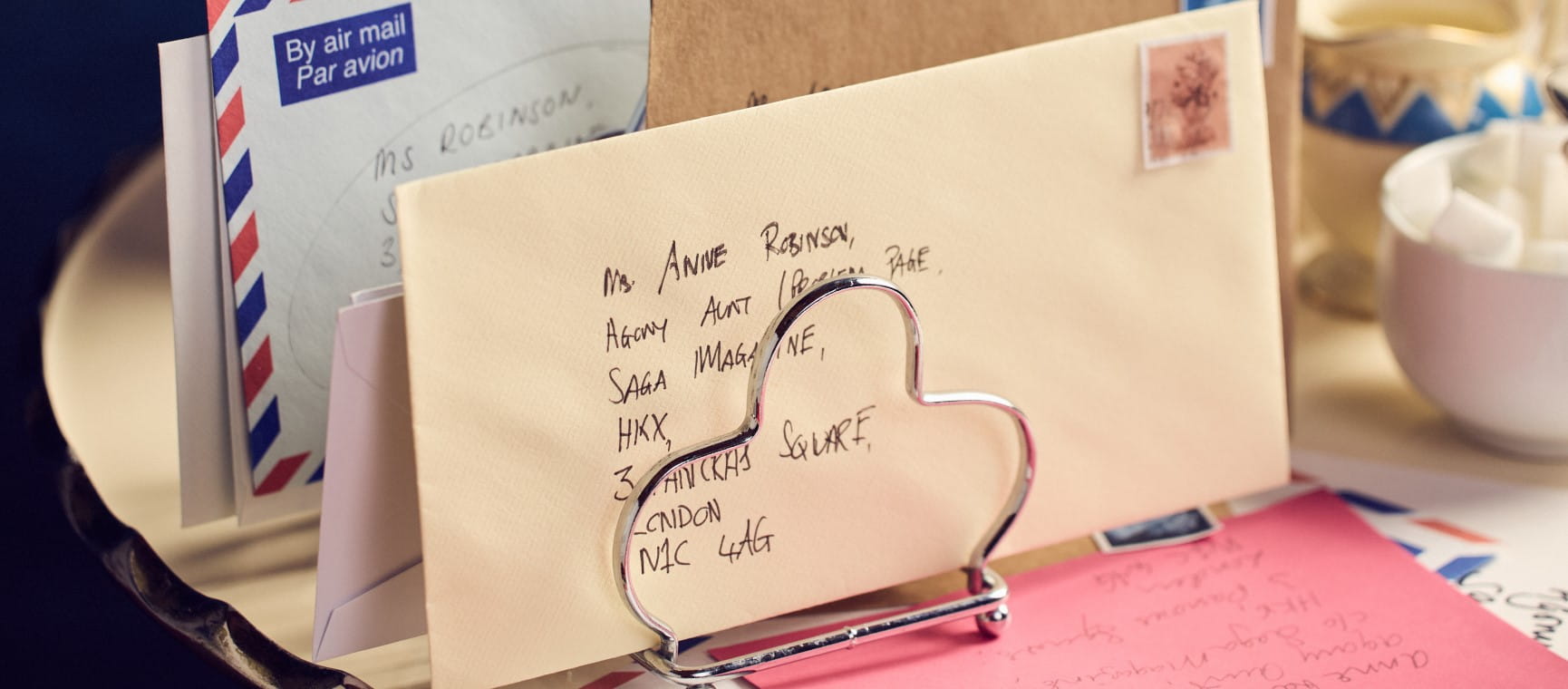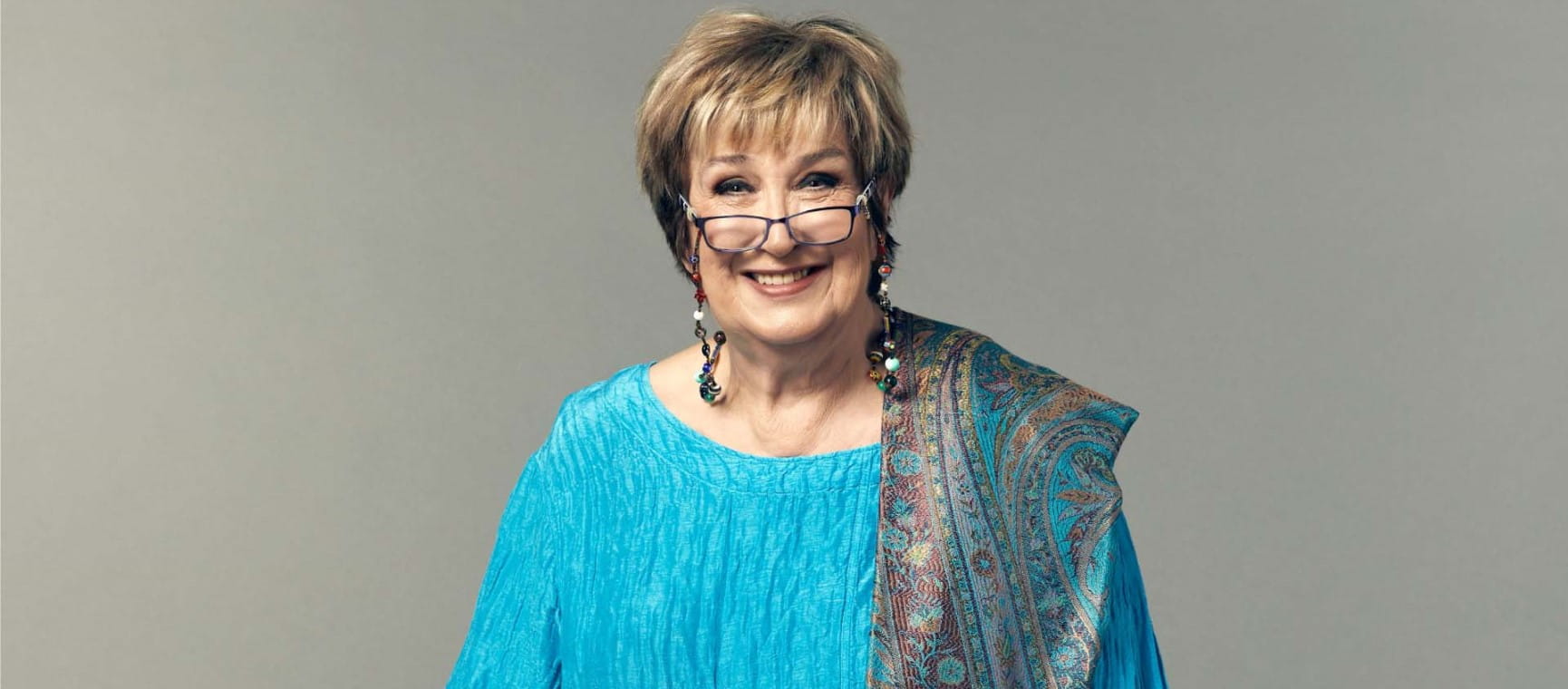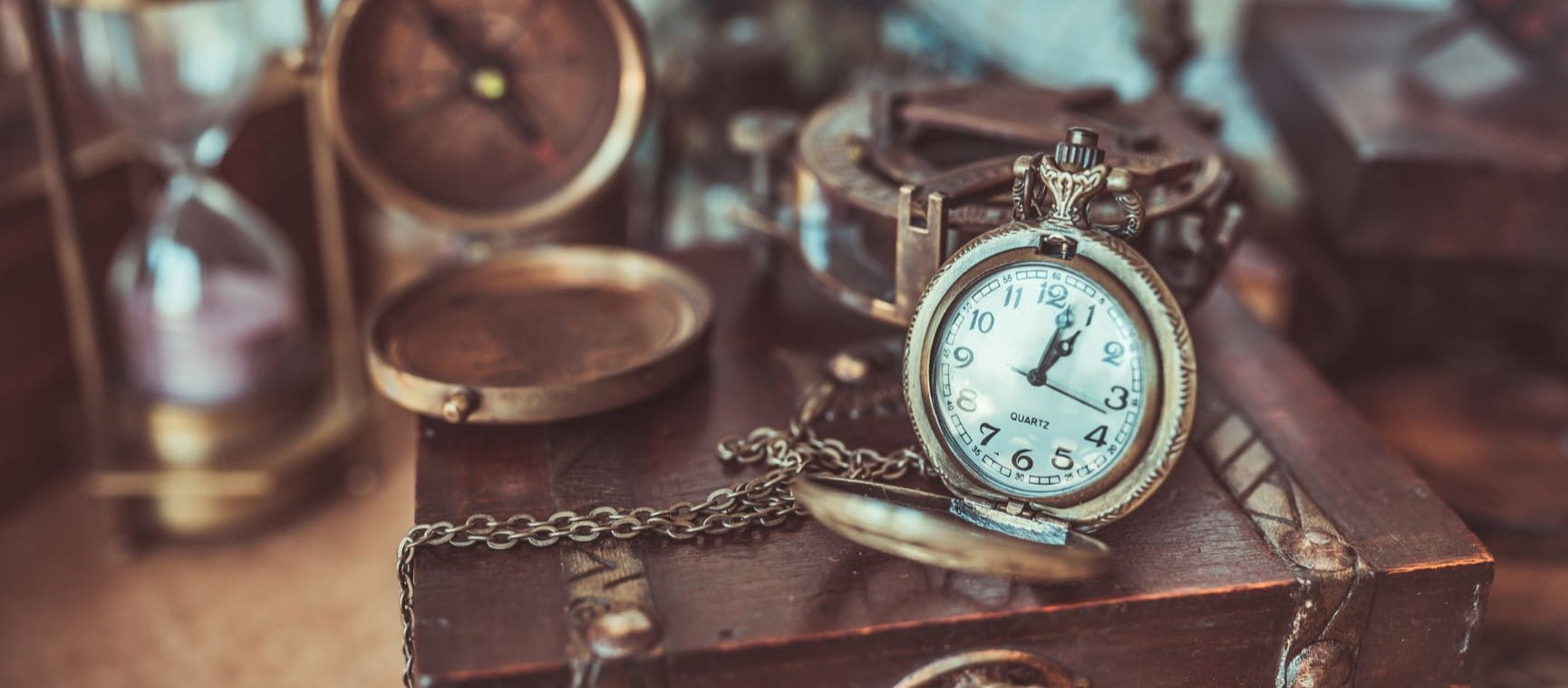
My new hobby of household treasure-seeking began with a gold wedding ring of mysterious provenance that had lived in a jam jar for decades in my boyfriend Norman’s old house.
When Norman proposed after nine years together, he fished it out of its humble, button-filled home and ended up putting it on my finger at our ceremony in January 2023. When examined through a local jeweller’s loupe, the tiny inner inscription showed that it was 22-carat gold and therefore worth between £800–£900, much to Norman’s amazement.
That figure was later confirmed by private buying service Burlingtons Ltd – a company that offers valuations for heirloom-owning over-50s like myself – which had sent me a brochure advertising its services.
Daniel Ives, the company’s managing director, came to my home and not only confirmed how much the ring was worth but also estimated the value of my cherished 1960s Terence Conran coffee table with a laminate top depicting sketches of London landmarks, which I had snapped up for £100 from online vintage store Cha Cha Cha eight years ago. He says it could now fetch £500–£700.
After Daniel had valued my wedding ring and the Conran table, Norman showed him three of his own antiques as well: a crackleware vase inherited from an uncle who brought it back from the South China Seas, a 1920s table lamp in the shape of a girl holding up an electric-light globe, and a cromach, or Scottish walking stick, that he had inherited from his grandfather.
Sadly, their gorgeous looks were not reflected in their value.

Daniel identified the vase as one from Satsuma, Japan, and made between 1910 and 1930 for the tourist market – so only worth up to £100–£150. Had the table lamp been bronze, it could have fetched £3,000–£4,000 – especially if signed by leading Art Deco sculptors such as Josef Lorenzl, Demetre Chiparus or Ferdinand Preiss. But it was unsigned and made of humble spelter, so only worth up to £300–£400.
As for the cromach, the curved handle with a little smiling man’s head on the end was made of horn that Daniel said would be hard to sell these days because of a squeamishness around the ethics of animal products like horn.
All this made me wonder about the first editions of several George Bernard Shaw plays left to me by my first husband Liam, an avid book collector who had blithely assumed they would be a hedge against inflation. I certainly wasn’t going to cast his literary pearls before buyers on websites such as eBay or Ziffit.
Not when Forum Auctions, a specialist auction house for rare books and manuscripts, recently achieved £44,000 for the 1954-55 first editions of all three volumes of JRR Tolkien’s The Lord of the Rings and £14,000 for the 1949 first edition of George Orwell’s Nineteen Eighty-Four.

So much for my daydreams, however. Daniel referred my Shaw query on to literary specialist John Loska of Colin Page Antiquarian Books, who told me that because Shaw has long since fallen out of fashion, Pygmalion is the only work worth anything now due to its association with the peerless musical version My Fair Lady. To complicate matters further, there’s even a hierarchy in first editions.
“The 1913 privately printed Pygmalion is rare and worth a few thousand depending on the condition,” John points out. But Liam’s prized 1916 first English trade edition, published by Constable? “Very common and of very little value, perhaps £10,” was his crushing verdict.
So if you are tempted, like me, to go hunting around in your attic or boxroom for overlooked antiques, what’s the best route for ensuring that you achieve the right price?
Aside from private services, auction houses such as Christie’s, Sotheby’s and Bonhams are a good option for potentially high-value pieces. Or contact your local auction house for less precious objects.
Read what the Saga Money experts have to say on making money from selling your vintage clothes, your old CD and DVD collections, or your old and potentially valuable coins.
If you’d rather sell multiple items in one go, try websites such as Vintage Cash Cow. You can post a box of items to them for free or have it collected, and they will give you a quote and return them if you’re not happy with the price.
Alternatively, if you fancy being on TV, you could always apply to appear on shows such as BBC One’s Antiques Roadshow and The Bidding Room. But in the end, goods are worth only what people are prepared to pay for them. Something may indeed be rare and wonderful, but fluctuating fashions play a key part in the market. It’s always a gamble.
You can apply to appear on BBC One’s Antiques Roadshow. Refuse worker David Rose went on the show after discovering a top hat, cigar case and more than 200 letters in a rubbish dump in 2019. It turned out that the letters had belonged to Sir Winston Churchill’s cook, while the hat and cigar case had actually been Churchill’s. The entire collection was valued at £10,000.
In 2005, Keith brought along a clock he had inherited that had been banished to a box in the attic. Clock expert John Jillings revealed that it dated to 1754 and would be worth £30,000–£35,000 after it being cleaned and restored.
BBC’s The Bidding Room also invites members of the public to take part.
Brown antique furniture (solid dark wood, such as walnut, mahogany, rosewood and teak) is often passed down through generations but if you’re looking to sell, be aware it’s currently out of favour unless it’s very old.
Furniture makers such as Chippendale, Gillows of Lancaster and London or Hindley, Charles & Sons are still popular. Names really matter.
“It has to be special,” emphasises Andrew Blackall of the Wiltshire-based antiques boutique Blanchard Collective. But the retro market of mid-century wood furniture made by G Plan and Ercol is currently in hot demand, according to Blackall.
However, you shouldn’t necessarily “frown at brown”, he says, when you buy, sell or dump.
“Makers’ labels and provenance, a history of who, what and where, always add value, so look for those.”
That view is echoed by retired London auctioneer Andrew Jackson.
“When antiques go out of fashion and people dump them, it creates a scarcity, which is when collectors start sniffing around," he says. "You can still sell decent brown furniture for good money if it’s high quality, from the 18th or 19th centuries. The smaller, delicate pieces are what sell now.
"Although with a Waring & Gillow mahogany dining table and eight chairs, you’re still in business.”

One item that’s likely to prove a good investment is an historic rug, defined as between 75 and 100 years old.
They can fetch up to £2,000–£3,000, according to Jackson, who says, “Quality ones will last a lifetime, though Chinese ones are less fashionable now than they were up to the 1980s.”
Authentic antique Persian rugs can command even higher sums – sometimes up to six figures. There’s always a market for memorabilia and items sell for much more when the artist is dead because of the rarity value. The autograph of David Bowie on a photograph or record sleeve can fetch £200–£400, for example.
Current best investment bets include:
This is a better choice for items with a subjective value that’s difficult to estimate. A reserve (starting) price can be set and the sky is the limit with a worldwide market for online platforms such as the-saleroom.com.
But you and the buyer will both be charged commission on the hammer price. And then there’s the wait to be paid, which can be up to eight weeks depending on each house’s policy.
This route is better for items with an objective value that you’ve researched beforehand and allows you to avoid the auction house fees.
There’s a convenience about using a private buying service as some will visit you at home and then pay an agreed sum into your bank account.


Every issue of Saga Magazine is packed with inspirational real-life stories, exclusive celebrity interviews, brain-teasing puzzles and travel inspiration. Plus, expert advice on everything from health and finance to home improvements, to help you enjoy life to the full.
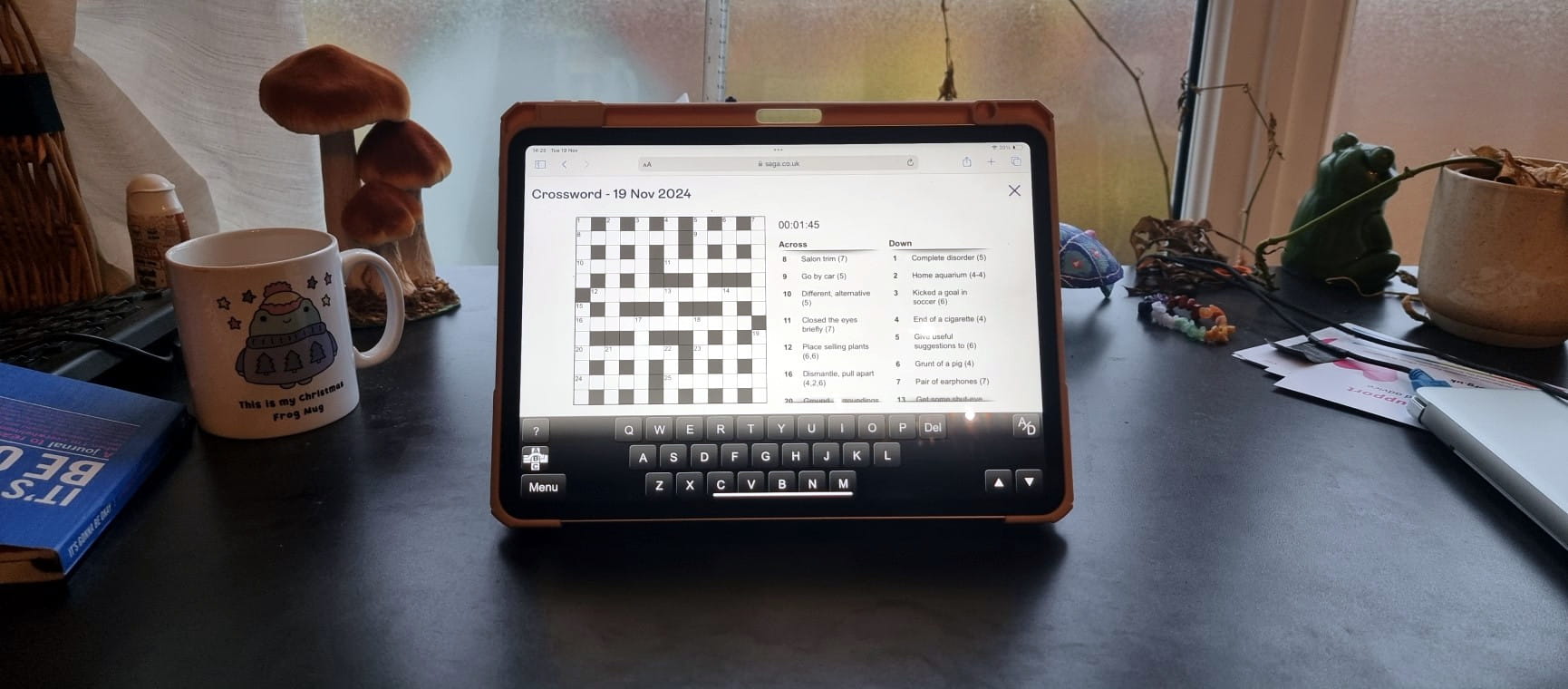
The ultimate guide to Saga Puzzles, full of technical tips, tricks and hints.

With the start of the new financial year on 6 April, our money expert explains the changes to your pension, benefits and taxes.

